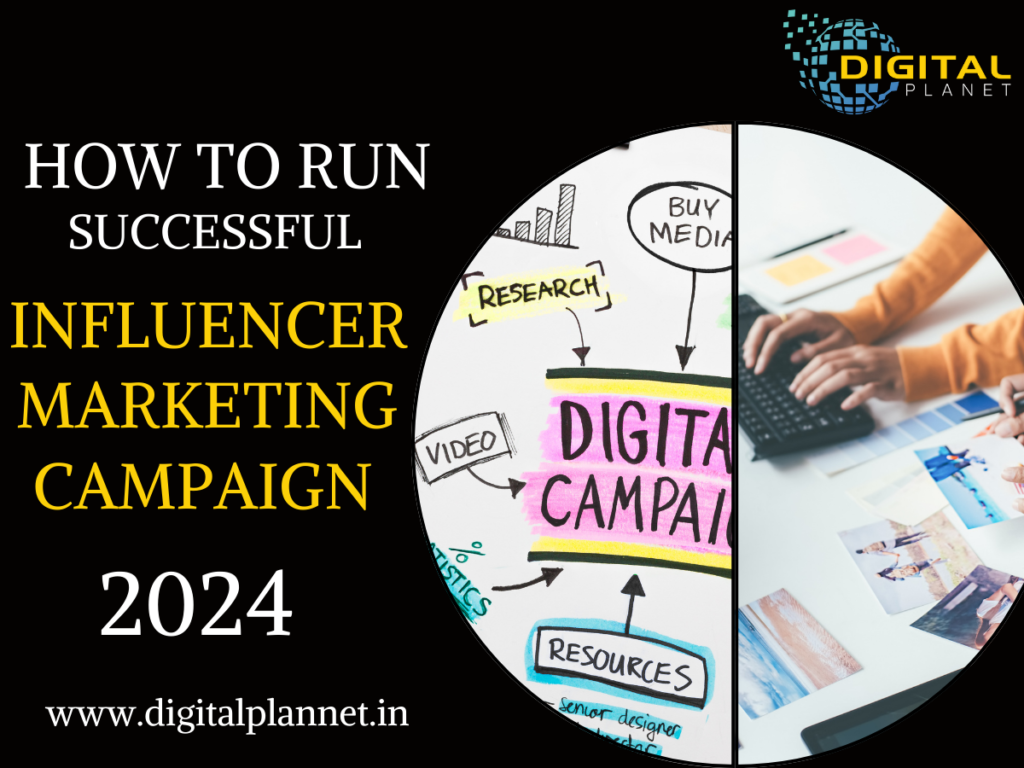What is an influencer marketing campaign?
An influencer marketing campaign is a strategic collaboration between a brand and an individual who has a significant online following, known as an influencer. The campaign leverages the influencer’s credibility, reach, and engagement with their audience to promote the brand’s products or services. Unlike traditional advertising, influencer marketing focuses on authentic content creation and personal endorsements, allowing brands to connect with their target audience in a more genuine and relatable way. Through sponsored posts, reviews, or social media takeovers, influencer marketing campaigns can drive brand awareness, increase customer trust, and boost sales by harnessing the power of social proof and word-of-mouth recommendations.
What do Different Types of Influencer Marketing Campaigns Look Like?
Influencer marketing campaigns come in many forms, each leveraging the influencer’s loyal following, trust, and authenticity. According to our Pulse Survey, brands are focusing on key influencer partnerships like giveaways, product collaborations, and influencer-led advertisements. Let’s explore some of the most common types:
Giveaways and Contests: Giveaways are one of the most popular influencer marketing strategies, with 65% of marketers partnering with influencers to run contests. These campaigns often offer free or exclusive products, discounted services, or other enticing rewards to increase engagement and promote brand visibility. The influencer provides clear instructions on how followers can enter the contest, such as commenting, sharing, or completing a social media challenge. Giveaways are particularly effective in micro-influencer campaigns due to their highly engaged audiences.
Product Collaborations: Around 62% of marketers work with influencers through product collaborations. These collaborations leverage an influencer’s creativity by inviting them to co-create content or design a special edition of the brand’s products. This can include event activations, unboxing videos, reviews, and pre-release content, generating excitement and buzz around new product launches.
Affiliate Influencer Campaigns and Sponsored Posts: Over 57% of marketers use influencer-led advertisements such as affiliate marketing programs and sponsored posts. In affiliate marketing, influencers promote products or services, earning a commission for every sale made through their unique referral links or discount codes. This strategy is particularly popular in eCommerce, where influencers can easily share links or codes with their followers. Sponsored content involves brands paying influencers to create and publish posts on their accounts, typically marked with hashtags like #ad or #brandpartner to maintain transparency with followers.
By leveraging these diverse influencer marketing strategies, brands can effectively reach their target audience, boost engagement, and drive sales.
How to Run a Successful Influencer Marketing Campaign in 2024:

Influencer marketing continues to evolve as a powerful strategy in the digital landscape. As we move into 2024, brands must refine their approach to remain competitive and maximize the impact of their campaigns. This comprehensive guide outlines the key steps to running a successful influencer marketing campaign that can drive brand awareness, engagement, and conversions.
1. Define Clear Campaign Objectives:
The foundation of any successful influencer marketing campaign starts with clearly defined objectives. Whether the goal is to increase brand awareness, drive website traffic, boost sales, or enhance customer engagement, having a specific goal is crucial. These objectives should be SMART — Specific, Measurable, Achievable, Relevant, and Time-bound. By establishing clear goals, we can measure success and optimize our strategies throughout the campaign.
Why This Matters:
Aligns Efforts: Clear objectives ensure that both the brand and influencers are aligned in their efforts.
Measures Success: Specific goals allow us to track performance metrics and adjust strategies accordingly.
Focuses Resources: Understanding what we aim to achieve helps allocate resources more efficiently.
2. Identify the Right Influencers:
Selecting the right influencers is one of the most critical steps in running a successful campaign. We need to consider factors such as niche relevance, audience demographics, engagement rate, and content quality. Collaborating with influencers who genuinely align with our brand values and resonate with our target audience will yield better results than simply opting for those with the largest following.
Key Factors to Consider:
Relevance: Choose influencers who align with our brand’s niche and target market.
Engagement Rate: Focus on influencers with high engagement rates rather than just a large number of followers.
Content Authenticity: The influencer’s content should feel genuine and fit naturally with our brand’s messaging.
3. Develop a Compelling Value Proposition:
To attract top influencers and motivate them to participate in our campaign, we must offer a compelling value proposition. This could be in the form of monetary compensation, free products, or exclusive experiences. It’s essential to understand what the influencer values and tailor our offer accordingly. Building a relationship with influencers as partners rather than just as marketing tools will lead to more genuine and impactful collaborations.
Tips for Building Strong Relationships:
Personalize Communication: Take the time to understand the influencer’s preferences and tailor outreach accordingly.
Offer Fair Compensation: Ensure that the compensation reflects the influencer’s value and the scope of work.
Encourage Creative Freedom: Allow influencers the freedom to create content that aligns with their style while staying true to our brand’s message.
4. Craft an Effective Influencer Brief:
A detailed influencer brief is vital to the success of our campaign. This document should outline the campaign’s objectives, key messages, creative guidelines, deliverables, timelines, and any specific requirements. Providing clear guidelines while allowing influencers creative freedom will ensure that the content is authentic and aligns with our brand’s identity.
Essential Elements of an Influencer Brief:
Campaign Overview: A summary of what the campaign is about and its objectives.
Key Messages: The main points that we want to communicate through the influencer’s content.
Content Guidelines: Specific requirements related to the format, style, tone, and branding elements.
Deliverables and Deadlines: Clear details about the type and number of posts, submission deadlines, and any additional expectations.
5. Utilize Multi-Channel Strategies:
In 2024, an effective influencer marketing campaign should leverage multi-channel strategies to maximize reach and engagement. This means collaborating with influencers across various platforms such as Instagram, YouTube, TikTok, and blogs. Different platforms offer different strengths; for instance, Instagram is great for visuals and quick engagement, while YouTube allows for deeper storytelling and product demonstrations.
Advantages of a Multi-Channel Approach:
Extended Reach: Engaging multiple platforms helps reach a broader audience.
Diversified Content: Different platforms allow for varied content types, from short-form videos to long-form blog posts.
Improved SEO: Collaborations on platforms like YouTube and blogs can help improve our brand’s SEO rankings.
6. Leverage Data-Driven Insights:
In today’s data-driven world, tracking and analyzing performance metrics is essential for refining influencer marketing strategies. Use tools like Google Analytics, social media insights, and influencer platforms to monitor metrics such as engagement rates, reach, conversion rates, and ROI. This data will help us understand what’s working, identify areas for improvement, and optimize future campaigns.
Key Metrics to Monitor:
Engagement Rate: Measures how actively the audience is interacting with the content.
Reach and Impressions: Indicates how many people have seen the content.
Conversions: Tracks the actions taken by viewers, such as website visits or purchases.
Return on Investment (ROI): Evaluates the financial return generated from the campaign relative to its cost.
7. Encourage User-Generated Content:
User-generated content (UGC) can amplify the impact of influencer campaigns. Encouraging influencers’ followers to create and share their own content related to the campaign helps build a community around our brand, increases engagement, and enhances authenticity. Offering incentives such as giveaways, contests, or special discounts can motivate audiences to participate.
Benefits of User-Generated Content:
Enhanced Credibility: UGC adds a layer of social proof, increasing trust in our brand.
Greater Engagement: Encouraging followers to share their content fosters community involvement.
Cost-Effective Marketing: UGC is a budget-friendly way to generate additional content and reach.
8. Monitor and Adjust the Campaign in Real-Time:
Continuous monitoring of our campaign allows us to make timely adjustments to improve performance. Analyzing real-time data helps us understand what is working and what is not. We should be prepared to tweak strategies, experiment with new content formats, or even pivot the campaign direction based on the feedback and insights gathered.
Proactive Steps for Optimization:
A/B Testing: Experiment with different content formats, captions, and calls to action.
Feedback Loop: Regularly communicate with influencers to gain insights on what resonates with their audience.
Adjust Budgets: Reallocate budgets to the most effective influencers or platforms based on performance.
9. Measure and Report Campaign Results:
After the campaign concludes, it’s crucial to measure the results against our predefined objectives. A detailed report should include all relevant metrics, such as reach, engagement, conversions, and ROI. This report will help us understand the campaign’s impact, identify key learnings, and make informed decisions for future campaigns.
Components of a Comprehensive Report:
Campaign Overview: A summary of the campaign objectives and activities.
Performance Metrics: Detailed analysis of key metrics like reach, engagement, and conversions.
Insights and Learnings: What worked, what didn’t, and recommendations for future campaigns.
Examples of Successful Influencer marketing campaigns:
1. Ghadi Detergent X Lata Saberwal:

Example of a successful influencer marketing campaign is the collaboration between Ghadi Detergent and Lata Saberwal, a popular lifestyle influencer, facilitated by Digital Planet Influencer Marketing Company. This campaign effectively tapped into Lata Saberwal’s loyal audience, who trusts her recommendations for everyday essentials. Through engaging and authentic content, including demonstration videos and personal endorsements, Lata highlighted the benefits of using Ghadi Detergent for clean, fresh laundry. The campaign successfully combined the influencer’s credibility with Ghadi Detergent’s brand message, resulting in increased brand visibility, audience engagement, and a noticeable boost in sales. The partnership exemplifies the power of strategic influencer marketing to connect with target audiences in a meaningful way.
2. Titan World X Dewanshi Gupta:

A shining example of a successful influencer marketing campaign is the collaboration between Titan World and Dewanshi Gupta, a well-known fashion and lifestyle influencer, orchestrated by Digital Planet Influencer Marketing Company. Dewanshi Gupta’s authentic style and strong social media presence made her the perfect partner to showcase Titan World’s elegant timepieces and accessories. Through captivating Instagram posts, stories, and styling videos, Dewanshi creatively highlighted the versatility and appeal of Titan’s collection, aligning the brand with modern, fashion-forward consumers. This strategic partnership boosted brand awareness, engaged a wider audience, and drove a surge in online sales, proving the effectiveness of influencer marketing in connecting with the target market.
3. Quick Heal X Raj Shamani:

A remarkable example of a successful influencer marketing campaign is the collaboration between Quick Heal and Raj Shamani, a dynamic entrepreneur and digital content creator, managed by Digital Planet Influencer Marketing Company. With his strong online presence and credibility among young professionals and tech-savvy audiences, Raj Shamani effectively communicated Quick Heal’s cybersecurity solutions through engaging videos, live sessions, and social media posts. Highlighting the brand’s key features like advanced virus protection and easy-to-use interface, Raj’s authentic approach helped build trust and awareness around the importance of digital security. This campaign not only amplified Quick Heal’s brand visibility but also drove significant traffic and conversions, showcasing the power of targeted influencer partnerships.
Conclusion:
Running a successful influencer marketing campaign in 2024 requires a strategic approach, a focus on authentic relationships, and a willingness to adapt. By setting clear objectives, choosing the right influencers, providing a compelling value proposition, and leveraging data-driven insights, brands can create impactful campaigns that drive meaningful results.
Related Posts
- Best AI for Video Generation Free 2025: Ultimate Guide + Top Picks
- How to Get Invite Code for Sora 2 (2025): The Ultimate Step-by-Step Guide
- Influencer Marketing for Travel Industry 2025
- Top 10 Motivational YouTubers in India-Must Follow in 2025
- Boosting Health & Fitness Brands with Influencer & UGC Marketing
